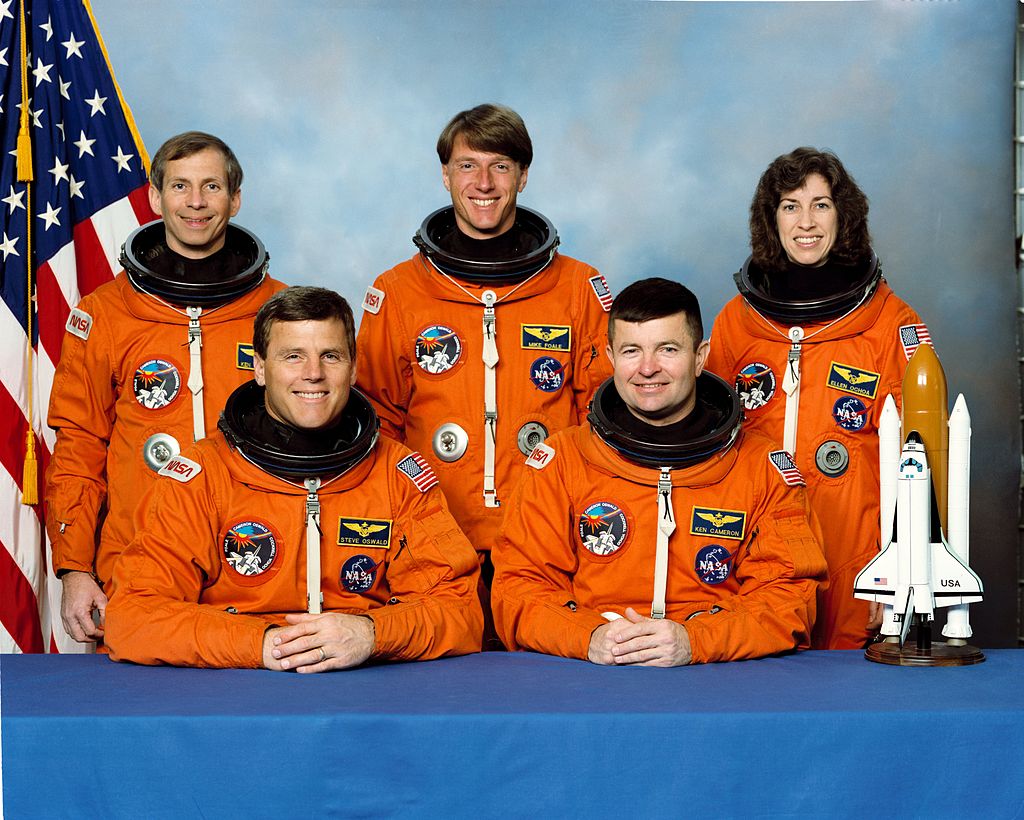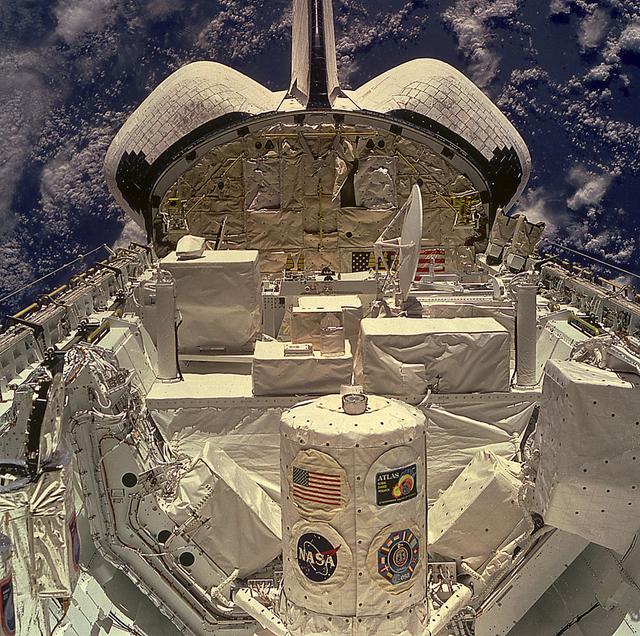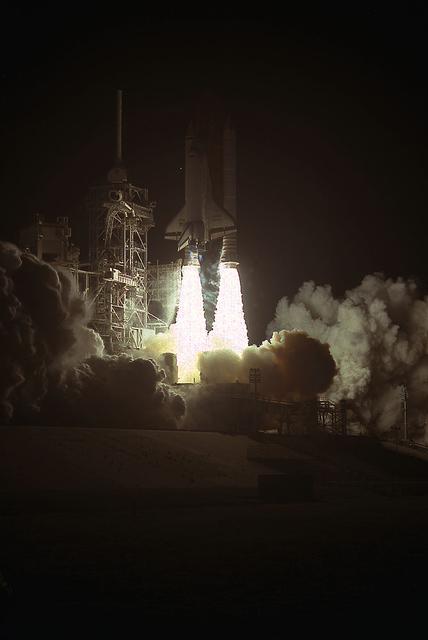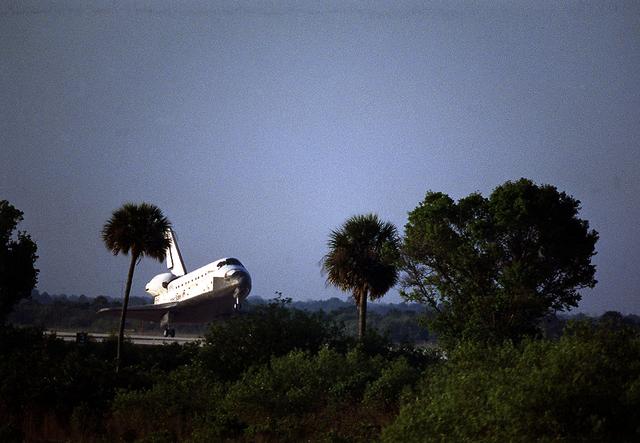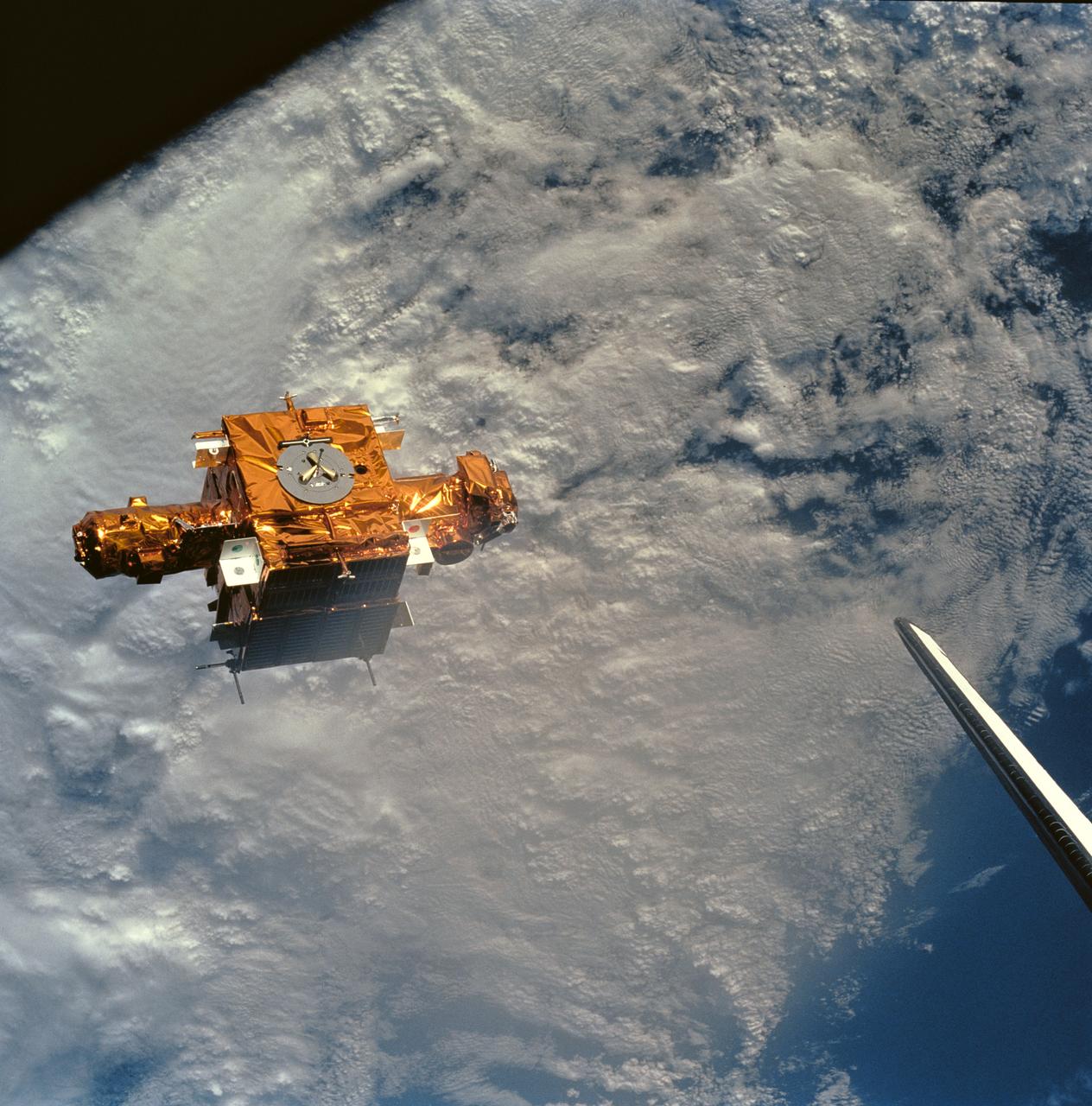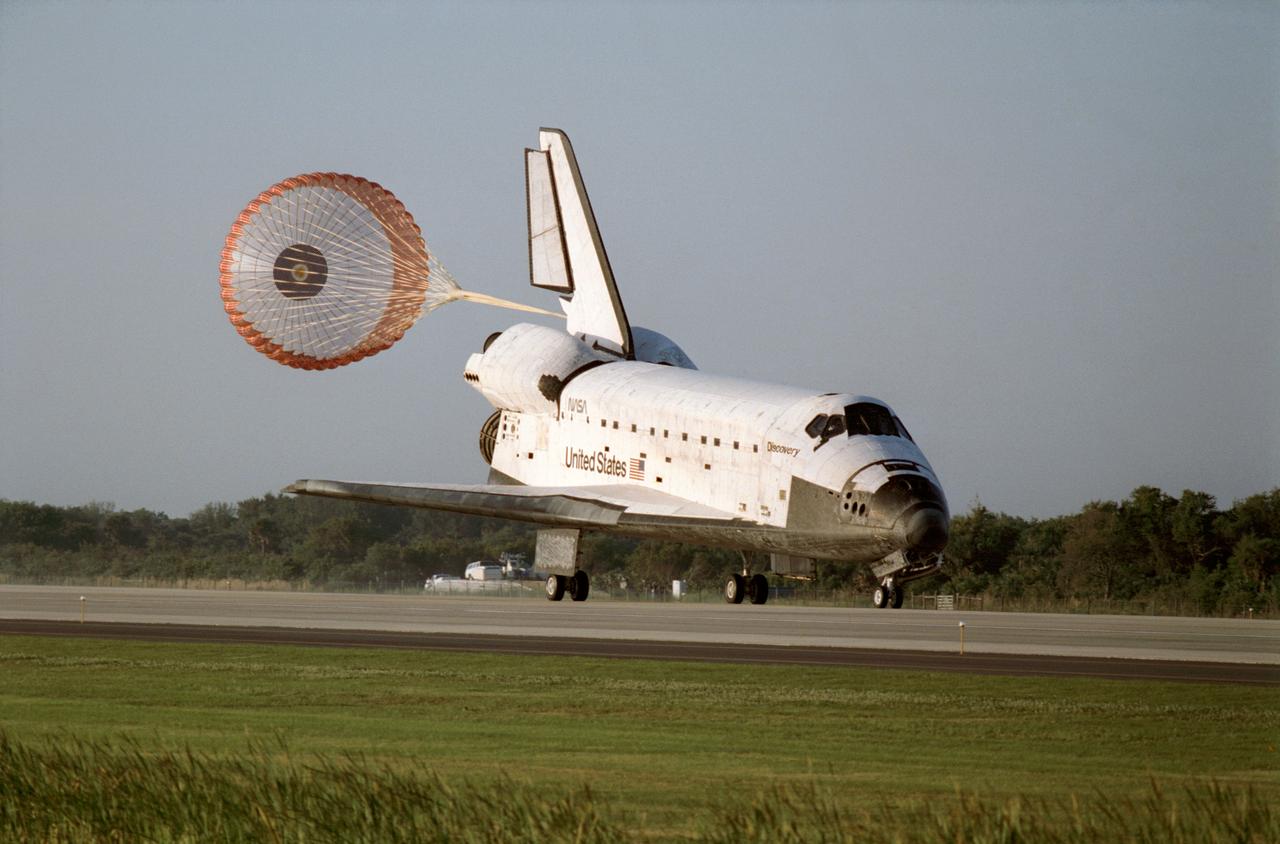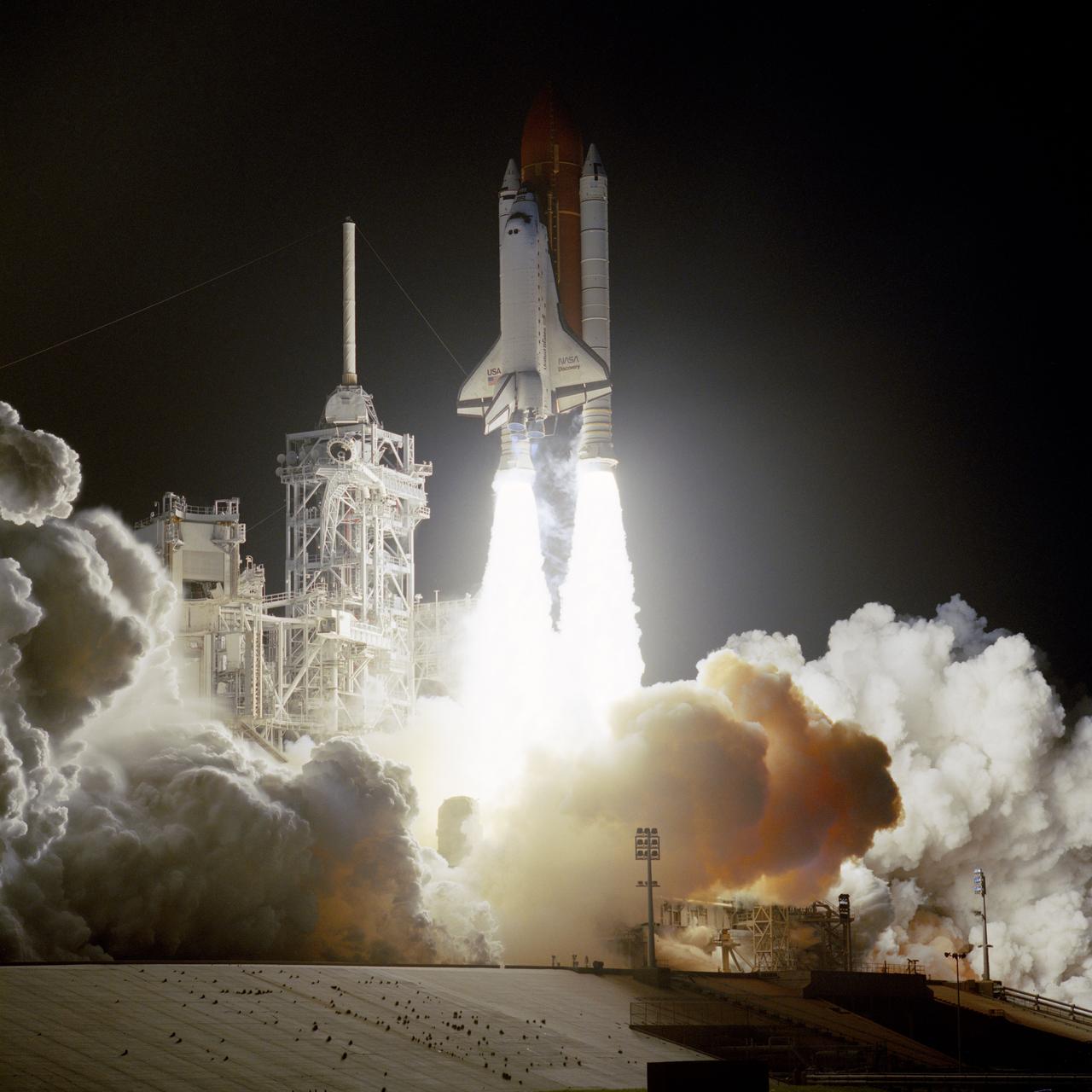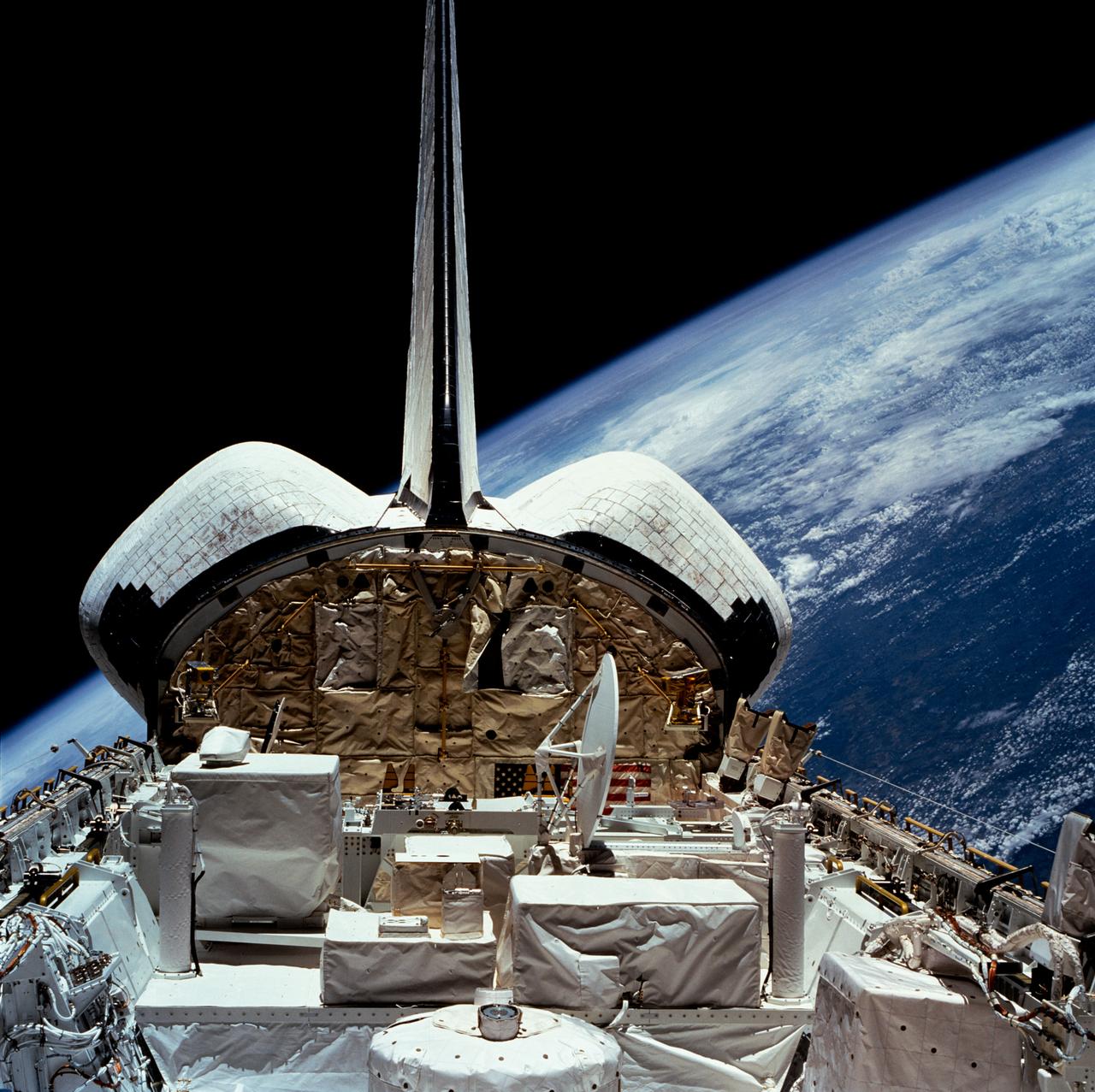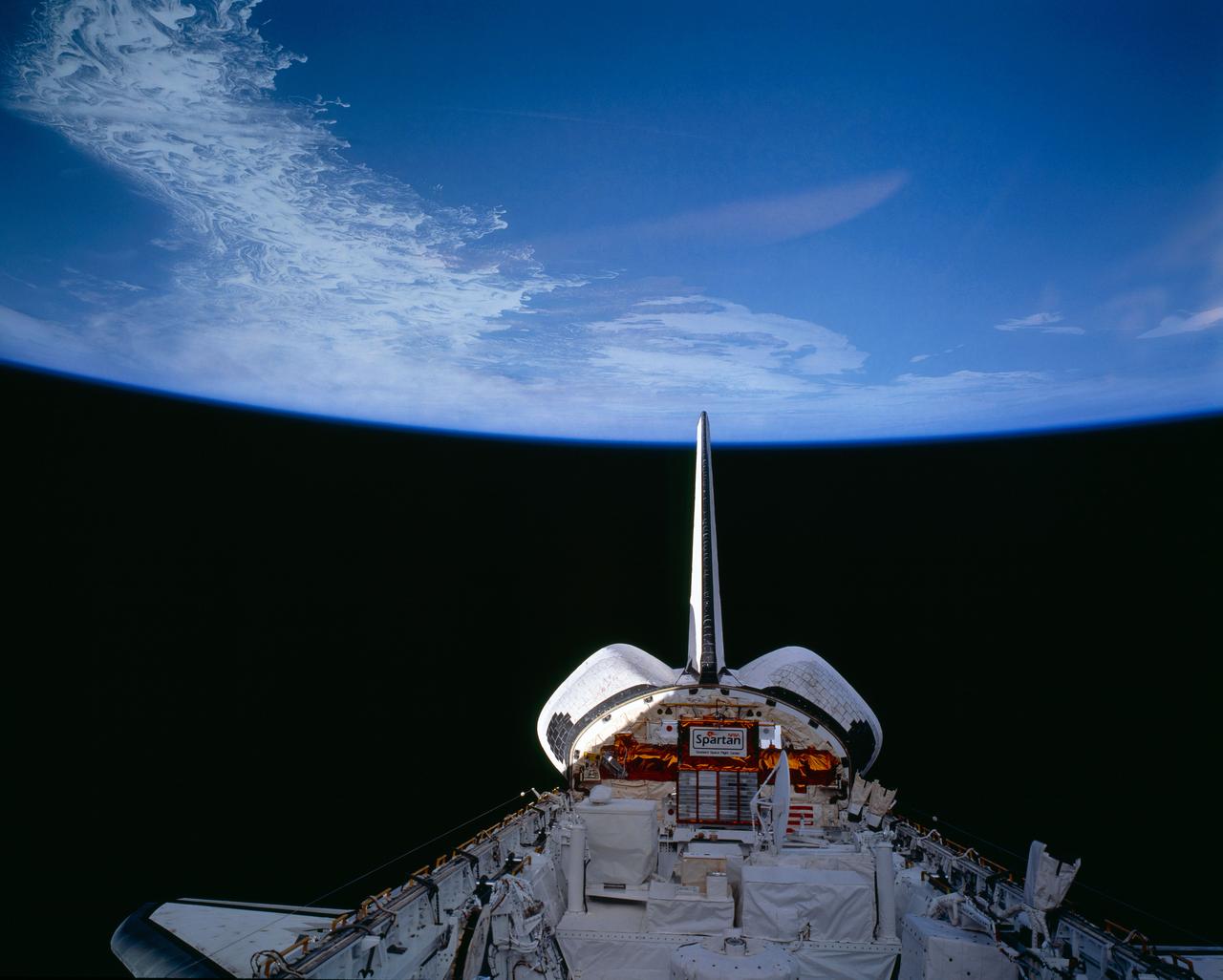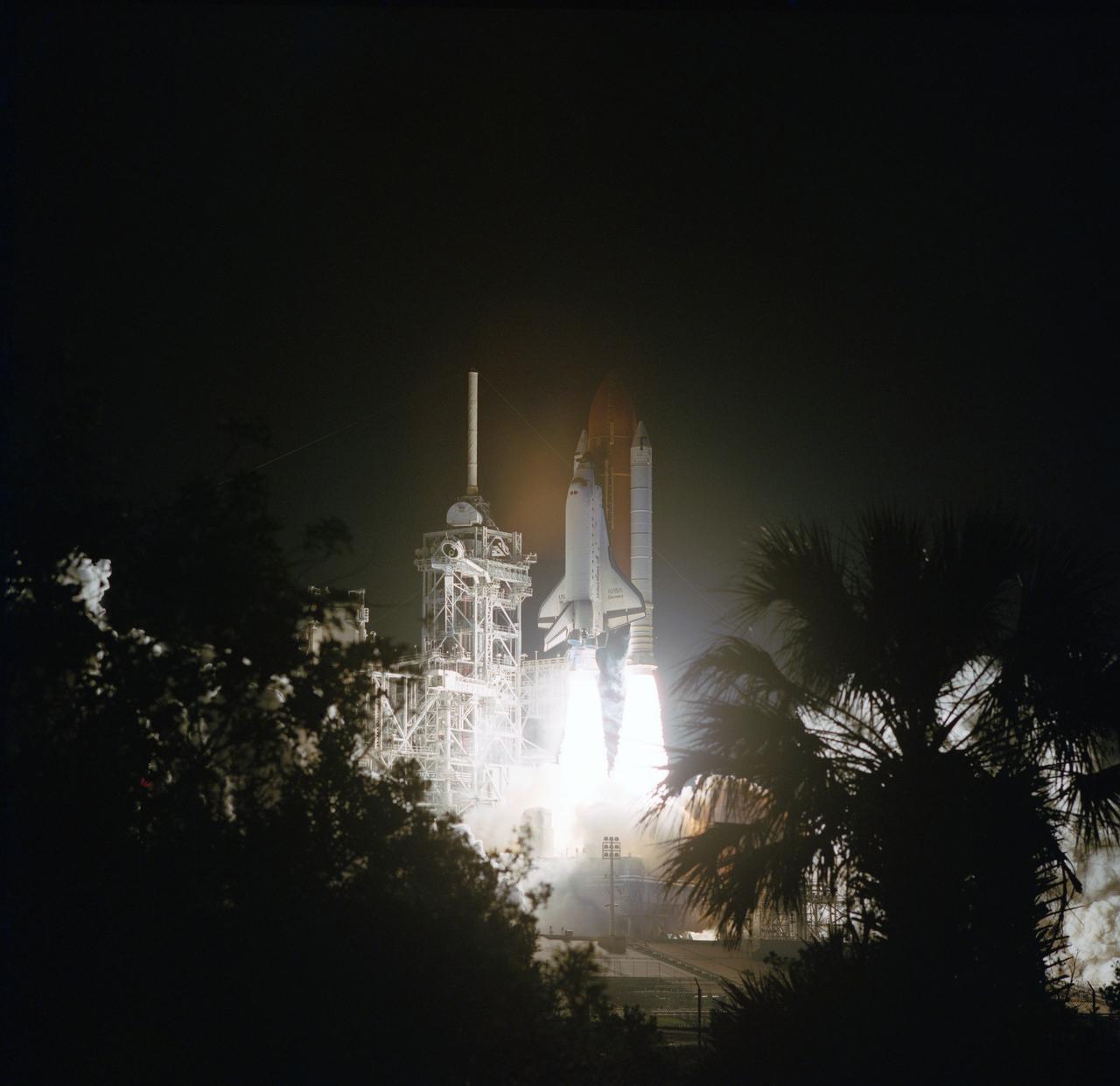STS-56 Fact Sheet
By Cliff Lethbridge

STS-56 — Discovery
54th Space Shuttle Mission
16th Flight of Discovery
Crew:
Kenneth D. Cameron, Commander
Stephen S. Oswald, Pilot
Kenneth D. Cockrell, Mission Specialist
Ellen Ochoa, Mission Specialist
Michael Foale, Mission Specialist
Orbiter Preparations:
Tow to Orbiter Processing Facility – December 19, 1992
Rollover to Vehicle Assembly Building – March 2, 1993
Rollout to Launch Pad 39B – March 15, 1993
Launch:
April 8, 1993 – 1:29:00 a.m. EDT. Launch attempt on April 6, 1993 was scrubbed at T-11 seconds by orbiter computers when instrumentation on a liquid hydrogen high point bleed valve in the main propulsion system indicated “off” instead of “on”.
Post-scrub tests indicated that the valve was properly configured for flight. April 8 launch occurred as scheduled with no delays.
Landing:
April 17, 1993 – 7:37:24 a.m. EDT at Runway 33, Kennedy Space Center. Rollout distance was 9,530 feet. Rollout time was 63 seconds. Mission duration was 9 days, 6 hours, 8 minutes, 24 seconds. Landing occurred during the 148th orbit. Landing was delayed one day due to bad weather.
Mission Summary:
The primary payload for the mission was the Atmospheric Laboratory for Applications and Science-2 (ATLAS-2), designed to collect data on the relationship between the sun’s energy output and Earth’s middle atmosphere, focusing on effects to the ozone layer.
Six experiments were mounted on a Spacelab pallet in the cargo bay, while one was mounted on the cargo bay wall in two GAS canisters.
The crew also employed the shuttle’s remote manipulator arm to deploy the Shuttle Point Autonomous Research Tool for Astronomy-201 (SPARTAN-201), a free-flying science instrument platform designed to study velocity and acceleration of the solar wind and observe the sun’s corona. SPARTAN-201 was retrieved during the mission and returned to Earth.
Astronauts made radio contact with schools around the world using the Shuttle Amateur Radio Experiment II (SAREX II), and reported brief radio contact with the Russian Mir Space Station, the first contact between a Shuttle and Mir using amateur radio equipment.
Other payloads included the Solar Ultraviolet Experiment (SUVE), Commercial Materials Dispersion Apparatus Instrumentation Technology Associates Experiment (CMIX), Physiological and Anatomical Rodent Experiment (PARE), Space Tissue Loss (STL-1), Cosmic Ray Effects and Activation Monitor (CREAM), Hand-held, Earth-oriented, Real-time, Cooperative, User-friendly, Location-targeting and Environmental System (HERCULES), Radiation Monitoring Equipment III (RME III) and Air Force Maui Optical Site (AMOS) experiments.
SELECTED NASA PHOTOS FROM STS-56
